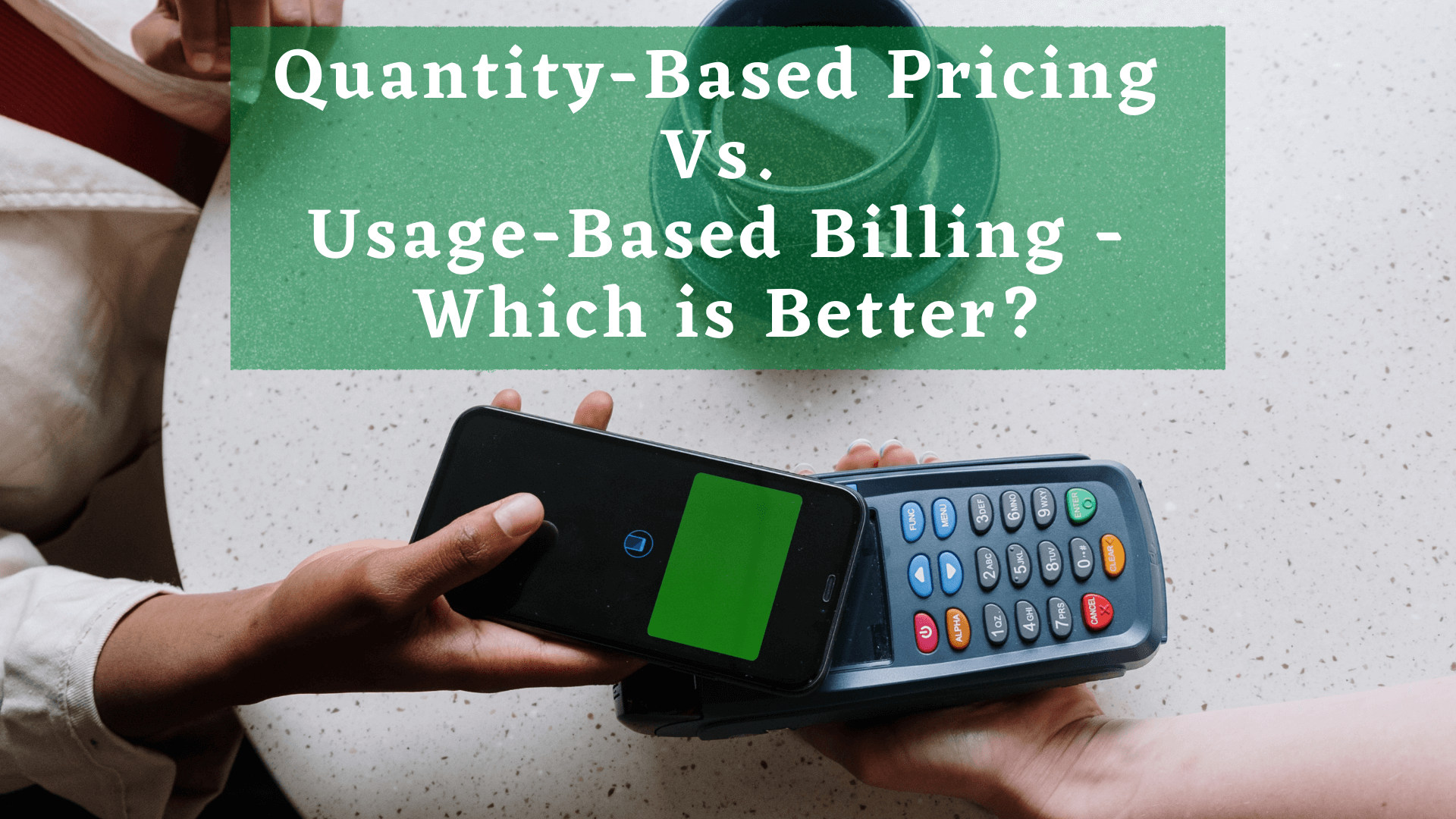Any subscription commerce brand can agree that getting its pricing plans right is critical to business success. Subscription-based businesses rely on recurring billing models instead of one-time transactions. For this reason, it’s important to learn the difference between quantity-based pricing vs usage-based billing. To price your products sustainably and fairly for the long term. That way, your subscribers will appreciate you more and stay loyal to your brand for a long time.
Many subscription-based businesses approach this billing challenge by charging based on the number of goods or services they offer their customers. There are two proven-tested methods: quantity-based pricing and usage-based billing.
We will discuss the difference between quantity-based pricing vs usage-based billing. Plus when to use one from the other and which one is the better billing model.
Table of Contents
ToggleDifference Between Quantity-based Pricing and Usage-based Billing
While both of these billing strategies seem similar, they are quite different in characteristics. Therefore, it’s important to know when to use one from the other.
Quantity-based Pricing
Quantity-based pricing is a pricing strategy where businesses charge their customers in advance for a certain amount or quantity of goods. This type of billing is also known as flat-fee, pay-as-you-go, subscription, and all-you-can-eat pricing models. For example, a subscriber to a web-based productivity platform might sign up to pay $20 a month for a 10-user subscription, $30 for a 15-user subscription, or $35 for a 20-user subscription. His card will be charged for the appropriate quantity at the beginning of each billing cycle.
There are three specific sub-types of quantity-based pricing:
- Tiered: a type of quantity-based pricing in which businesses offer different levels or tiers of service at different prices. Each level has a different set of features, and the customer can choose the tier that best suits their needs. For example, a web hosting company might offer three basic, premium, and unlimited hosting plans.
- Volume: a type of quantity-based pricing in which businesses offer discounts to customers who purchase large quantities of goods. For example, a customer might get a 20% discount if they purchase 100 items or more.
- Stairstep: a type of quantity-based pricing in which businesses offer increasing discounts to customers who purchase larger quantities of goods. For example, a customer might get a 20% discount if they purchase 100 items, a 30% discount if they purchase 200 items, etc.
Usage-based Billing
Usage-based billing is a type of billing where businesses charge their customers based on the amount or quantity of resources they consume. This type of billing is also known as consumption-based, pay-for-use, and usage-sensitive billing models. For example, a customer might be charged $0.15 per minute for long-distance calls, $0.20 per gigabyte for data storage, or $100 per month for unlimited access to a software application.
There are three specific sub-types of usage-based billing:
- Pay-per-use: a type of usage-based billing in which businesses charge their customers for each unit or amount of resources they consume.
- Pay-as-you-go: a type of usage-based billing in which businesses charge their customers in advance for a certain amount or quantity of resources, but the customer can consume those resources at any time. For example, a customer might sign up for a pay-as-you-go long-distance plan that charges them $100 per month for unlimited minutes, but they can use those minutes at any time.
- Free trial: a type of usage-based billing in which businesses offer their customers a free trial period to use their product or service. After the trial period is over, the customer will be charged based on the amount or quantity of resources they consumed. For example, a customer might sign up for a free trial of a software application. After the trial period is over, the customer will be charged $100 per month for unlimited access to the software.
When to Use Them?
So, now that you know what quantity-based pricing is from usage-based billing, when should you use them?
Here are some general guidelines:
- If you have a product or service consumed at a fixed rate, then quantity-based pricing would be a good option. For example, if you have a long-distance plan that charges $0.15 per minute, customers will know exactly how much they will be charged based on how many minutes they use.
- If you have a product or service that is consumed at a variable rate, then usage-based billing would be a good option. For example, if you have a pay-as-you-go long-distance plan that charges $100 per month for unlimited minutes, then customers will only be charged for the minutes they actually use.
- If you have a product or service that is offered on a subscription basis, then usage-based billing would be a good option. For example, if you have a software application that charges $100 per month for unlimited access, then customers will only be charged for the months they use the software.
- If you have a product or service that is offered on a per-user basis, then usage-based billing would be a good option.
- If you want to offer your customers a free trial of your product or service, then usage-based billing would be a good option. For example, if you have a software application that offers a free trial for 30 days, customers can try out the software before they are charged.
Which One is Better?
Quantity-based pricing and usage-based billing are two pricing models that can be used to charge customers for products and services. Each pricing model has its own advantages and disadvantages, so choosing the right one for your business is important.
Keep in mind that quantity-based pricing is best for products and services consumed at a fixed rate. And usage-based billing is best for products and services consumed at a variable rate. Of course, if you’re not sure which pricing model to use, you can always offer both options to your customers. Let them choose the best one for them.
Why Use ReliaBills
Once you’ve made your choice, you can then use ReliaBills to bring your billing strategy to life. ReliaBills offers a ton of invoicing and payment processing features, including:
- Easy invoicing
- Recurring billing
- Installment billing
- Estimates
- Customer data management
- Collection automation
- Customer portal
- and more!
ReliaBills goes the extra mile to get you paid on time. For more information about ReliaBills and its features, click here.
How to Create a New Recurring Invoice Using ReliaBills
Creating a New Recurring Invoice using ReliaBills involves the following steps:
Step 1: Login to ReliaBills
- Access your ReliaBills Account using your login credentials. If you don’t have an account, sign up here.
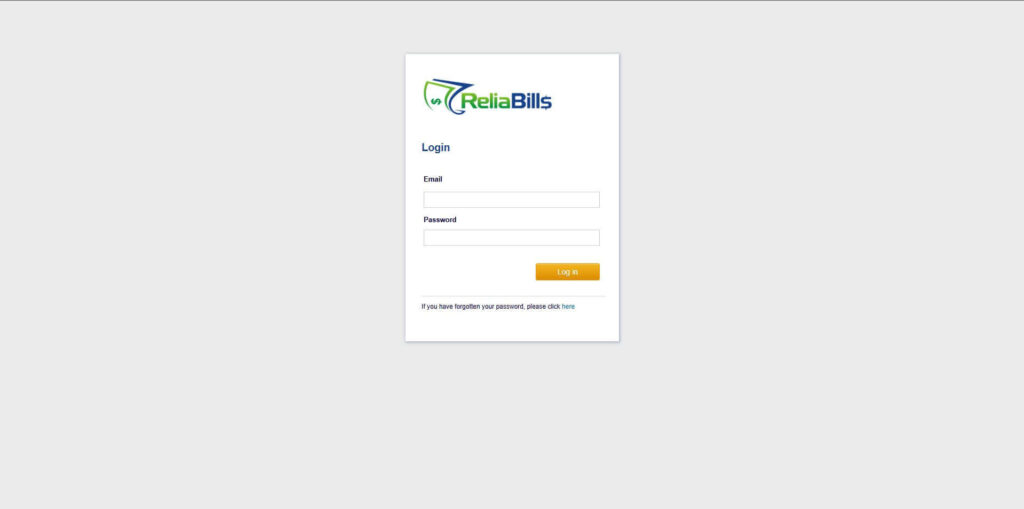
Step 2: Click on Recurring Invoices
- Navigate to the Invoices Dropdown and click on Recurring Invoices for an overview of the list of your existing customers.
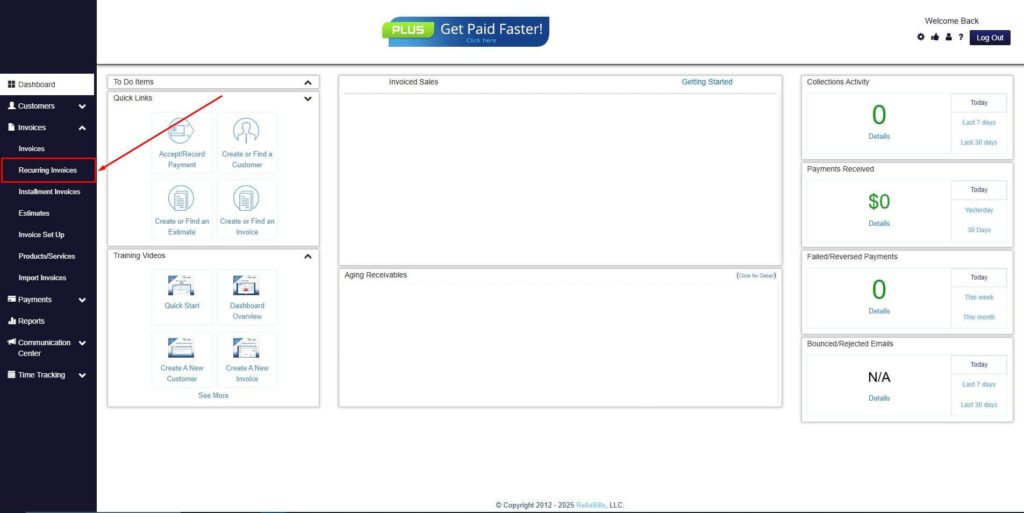
Step 3: Go to the Customers Tab
- If you have already created a customer, search for them in the Customers tab and make sure their status is “Active”.
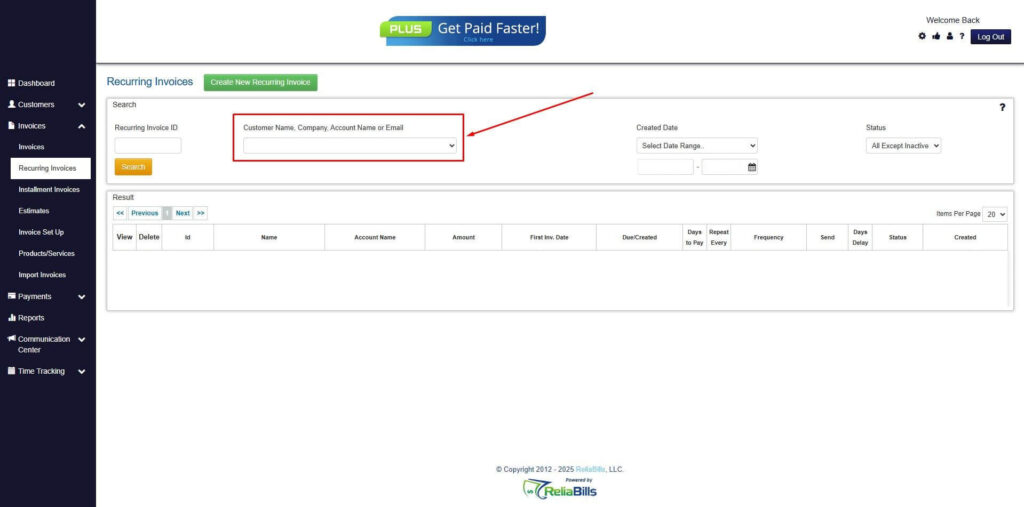
Step 4: Click the Create New Recurring Invoice
- If you haven’t created any customers yet, click the Create New Recurring Invoice to create a new customer.
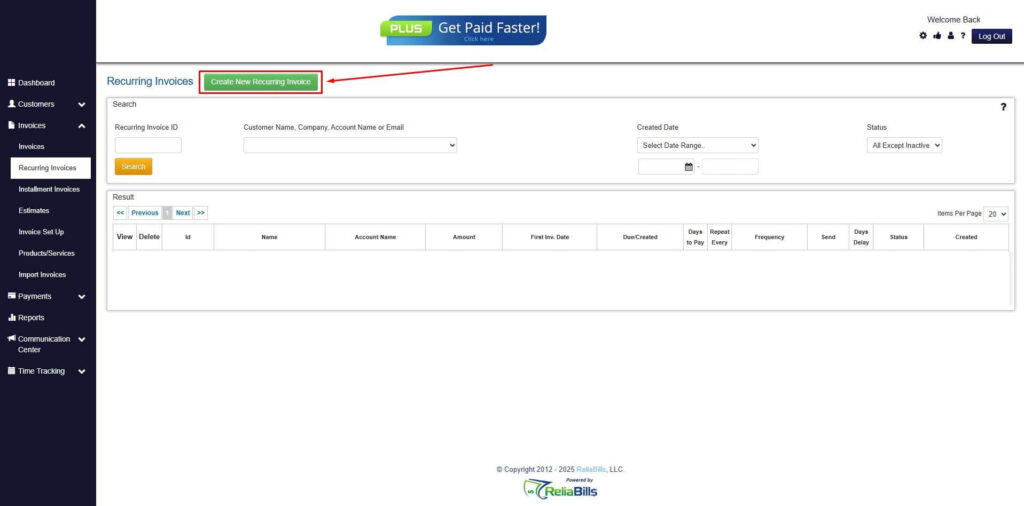
Step 5: Click on the “Click here” Button
- Click on the “Click here” button to proceed with the recurring invoice creation.
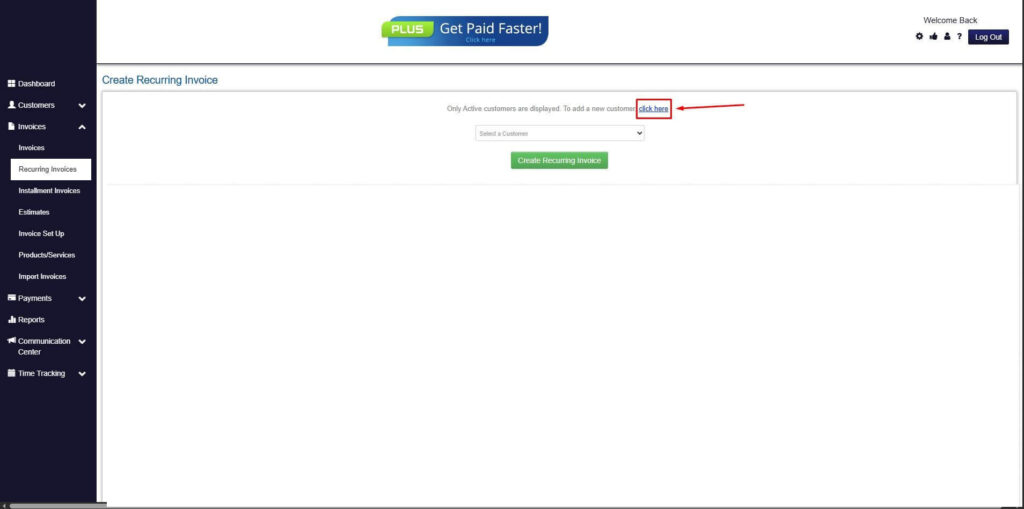
Step 6: Create Customer
- Provide your First Name, Last Name, and Email to proceed.
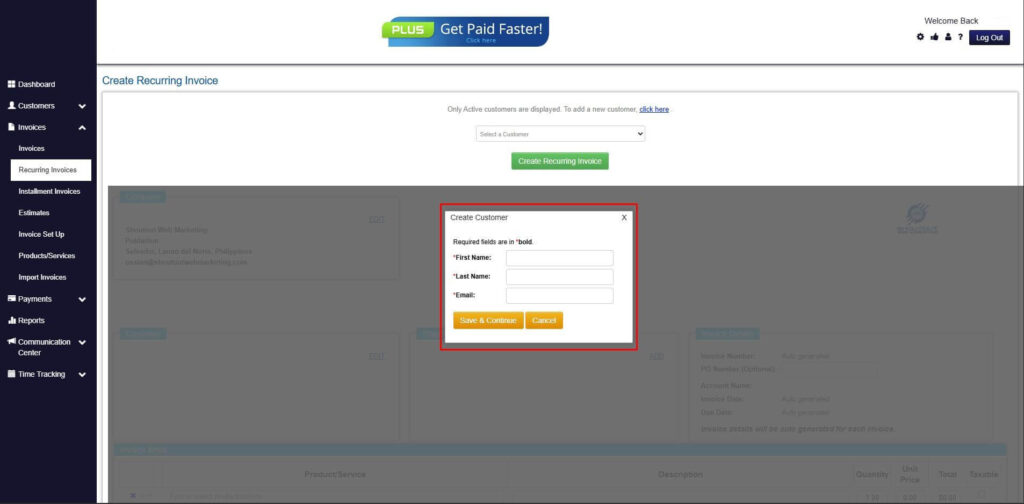
Step 7: Fill in the Create Recurring Invoice Form
- Fill in all the necessary fields.
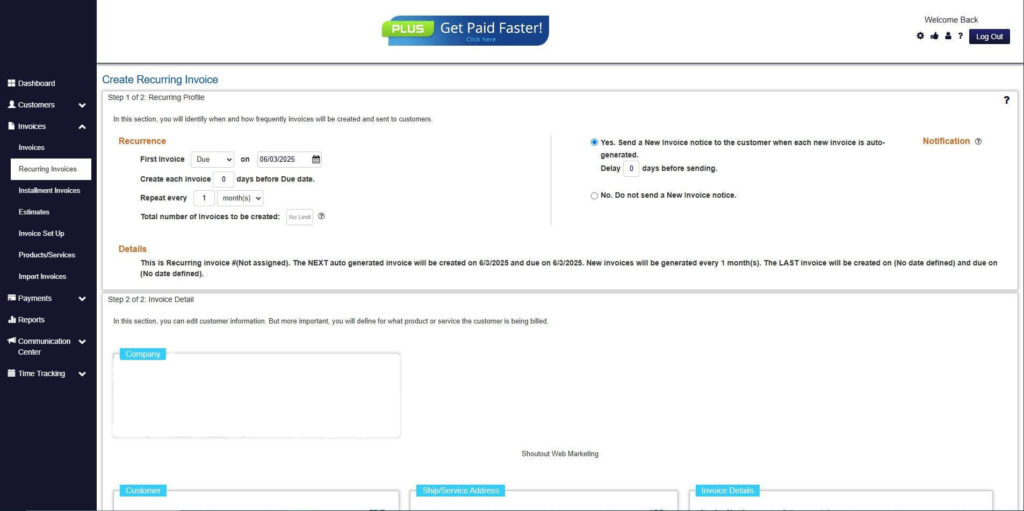
Step 8: Save Recurring Invoice
- After filling up the form, click “Save Recurring Invoice” to continue.
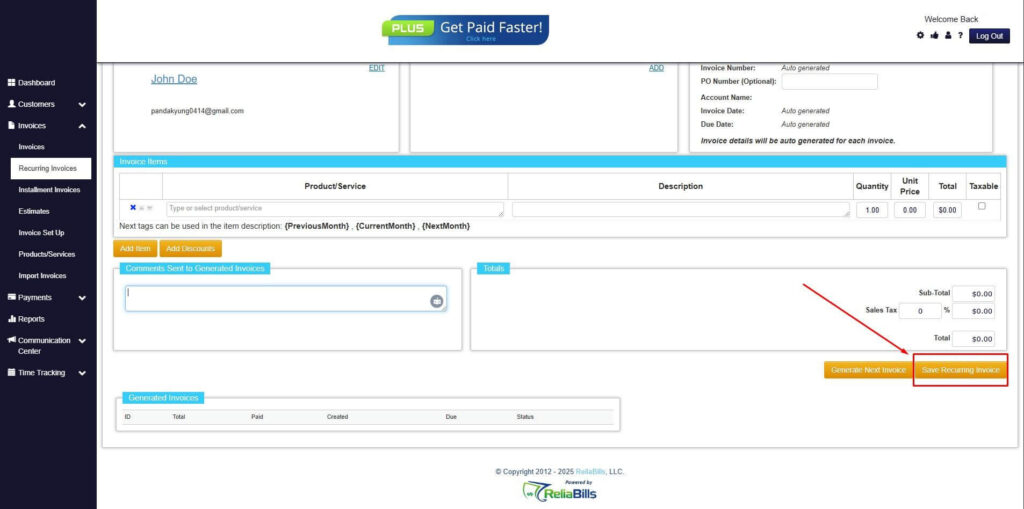
Step 9: Recurring Invoice Created
Your Recurring Invoice has been created.
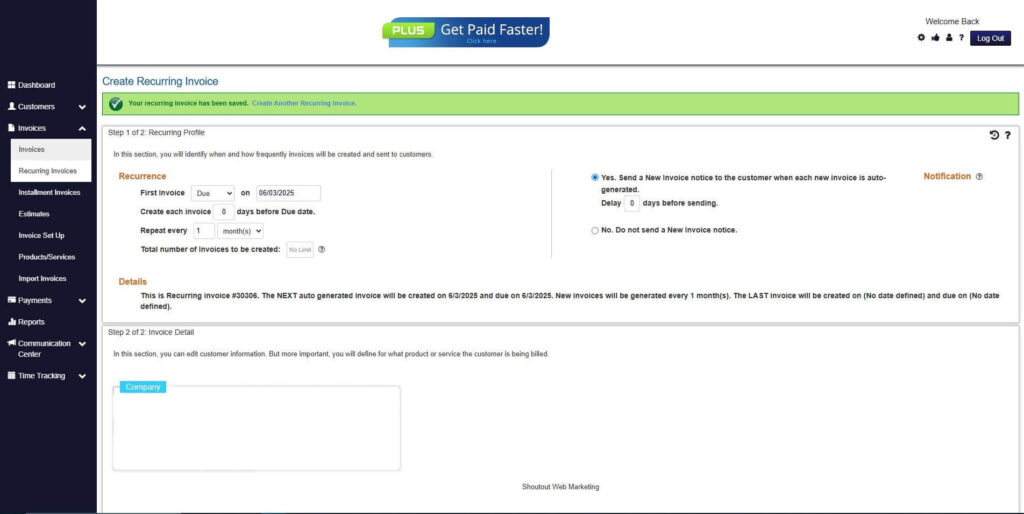
Wrapping Up
Now that you know, you can start to decide which pricing model is best for your business. Keep in mind that each pricing model has its own advantages and disadvantages. So be sure to choose the right one for you. You can always offer both options though to your customers and let them choose the one that’s best for them.

